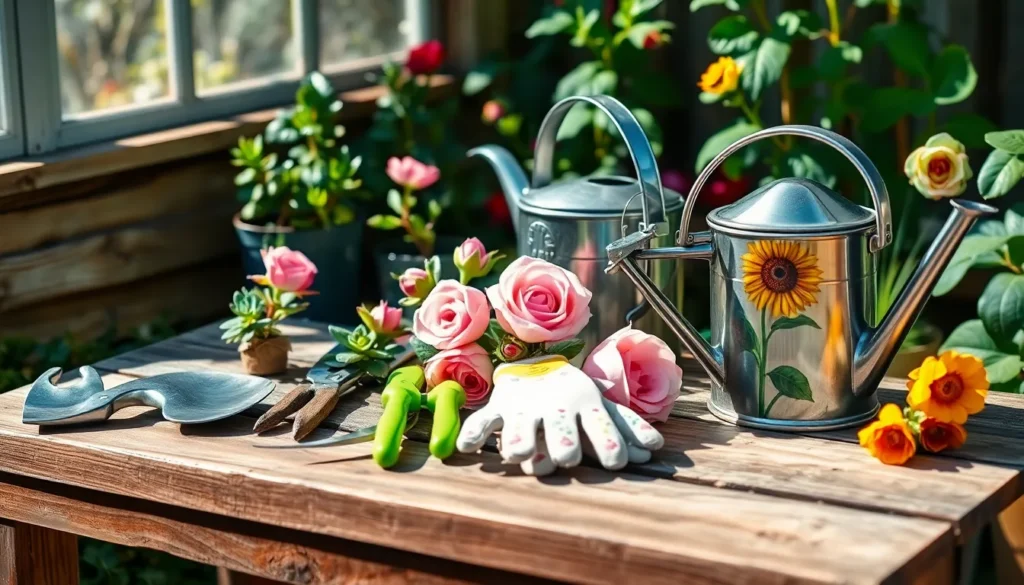Gardening is a journey that invites us to cultivate not just plants, but also patience, joy, and a deeper connection with the earth. Whether you’re just starting to explore this green-thumbed adventure or are an experienced gardener looking to refine your craft, choosing the right tools is crucial to your success and enjoyment. Just like a chef relies on the right utensils to create a culinary masterpiece, a gardener thrives with well-chosen tools that make each task more enjoyable and efficient.
In this article, we’ll delve into the art of selecting the perfect garden tools for your unique gardening needs. You’ll discover how the right tools can not only make your gardening tasks easier but also enhance your overall gardening experience, allowing you to nurture your plants with ease and confidence. From understanding the nuances of tool materials to recognizing the importance of ergonomic design, we’ll guide you through ten essential considerations that will transform your gardening toolkit. Embrace this opportunity to equip yourself with the knowledge that will empower you to garden smarter, not harder.
Understanding Garden Tool Basics
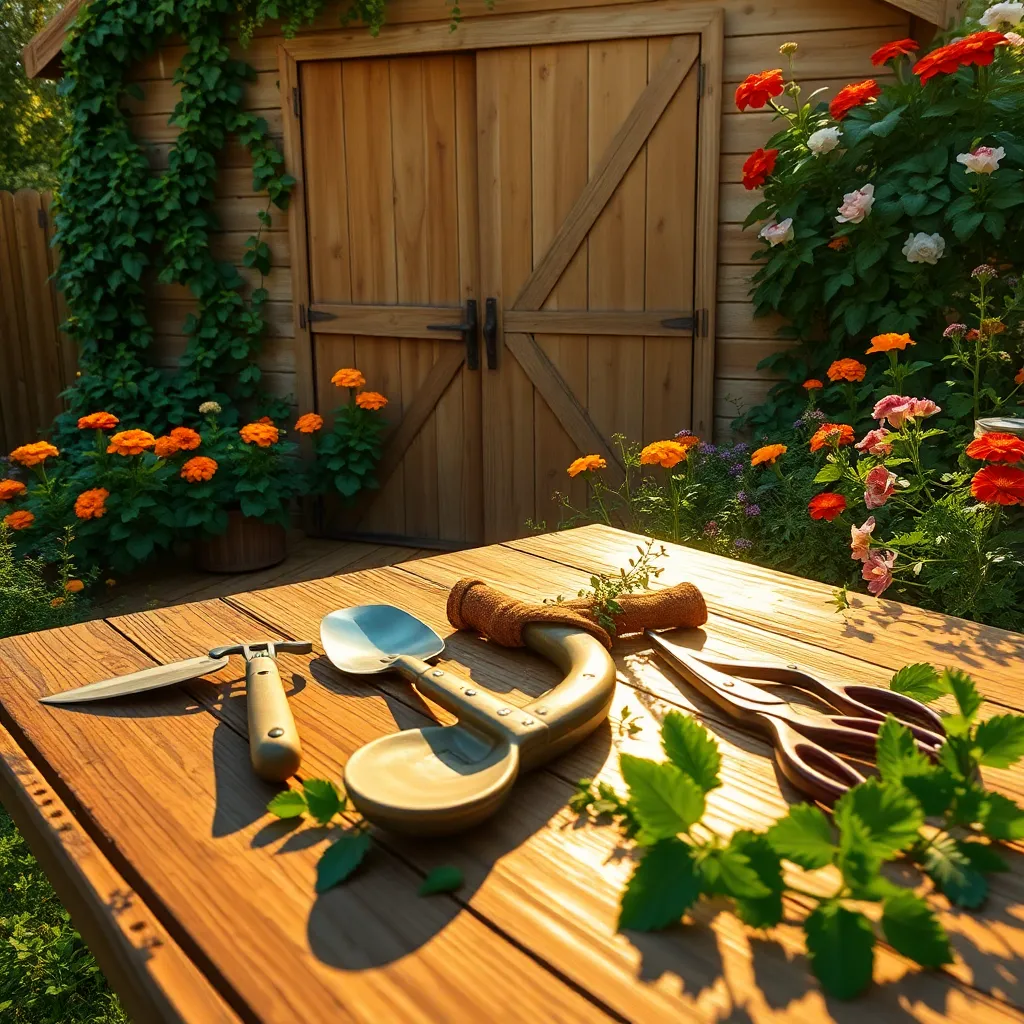
Understanding the basics of garden tools is essential for any gardener aiming to cultivate a thriving garden. Choosing the right tools can make tasks like planting, pruning, and weeding more efficient and enjoyable.
Start with a high-quality pair of pruning shears, as they are indispensable for maintaining plant health. Look for shears with a comfortable grip and sharp blade to ensure clean cuts, which help plants heal faster.
A sturdy trowel is another must-have tool for planting and transplanting. Select a trowel with a stainless steel blade to resist rust and a comfortable handle to reduce hand fatigue.
For larger soil preparation tasks, a hoe can be incredibly useful. It helps in breaking up soil and removing weeds, and it’s worth investing in one with a durable, lightweight handle for ease of use.
Gardeners should also consider the type of soil they are working with when selecting tools. For clay-heavy soils, opt for tools with strong, sharp edges that can penetrate the dense material more effectively.
For those ready to take on more advanced tasks, a wheelbarrow can be a game-changer. It is perfect for moving large amounts of soil, compost, or mulch, saving time and effort.
- Invest in quality tools for longevity.
- Match tools to specific gardening tasks.
- Consider ergonomic designs to prevent strain.
- Regularly clean and sharpen tools to maintain performance.
Assessing Your Gardening Needs
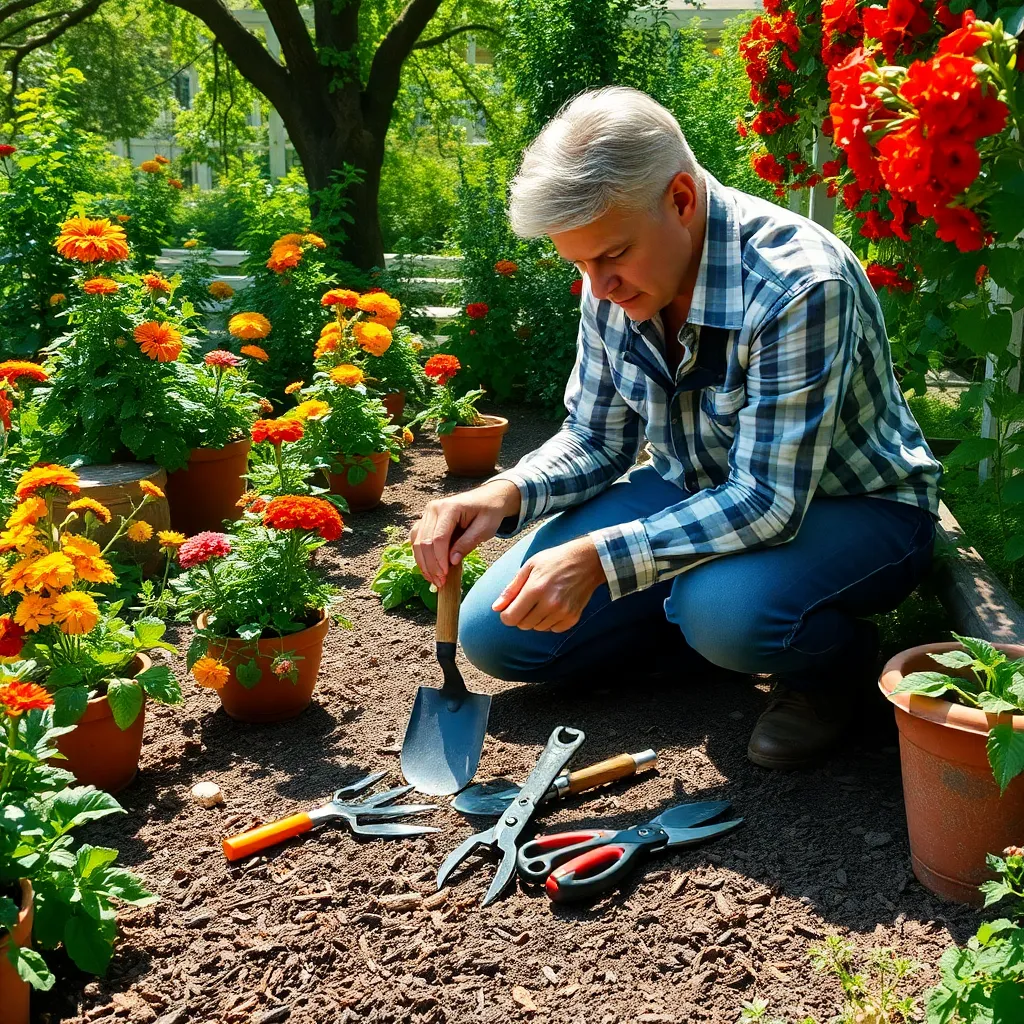
To choose the right garden tools, it’s crucial to first assess your specific gardening needs. Consider the size of your garden, the types of plants you grow, and your physical capabilities.
Different plants have varied requirements, influencing the tools you’ll need. For instance, vegetable gardens may require a sturdy hoe for weeding and a spade for digging, while a flower garden might benefit from a quality pair of pruning shears.
Soil type is another critical factor to consider when assessing your gardening needs. Sandy soils might necessitate tools that help with aeration, while clay soils often require robust digging tools to break up compacted earth.
Watering needs should also guide your tool selection. Gardens with plants that require frequent watering might benefit from a hose with a spray nozzle, while drought-tolerant landscapes can often do with simpler watering cans.
Finally, assess your own physical comfort and strength when choosing tools. Look for ergonomic designs that reduce strain, especially if you plan on spending long hours tending to your garden.
Choosing Ergonomic Hand Tools
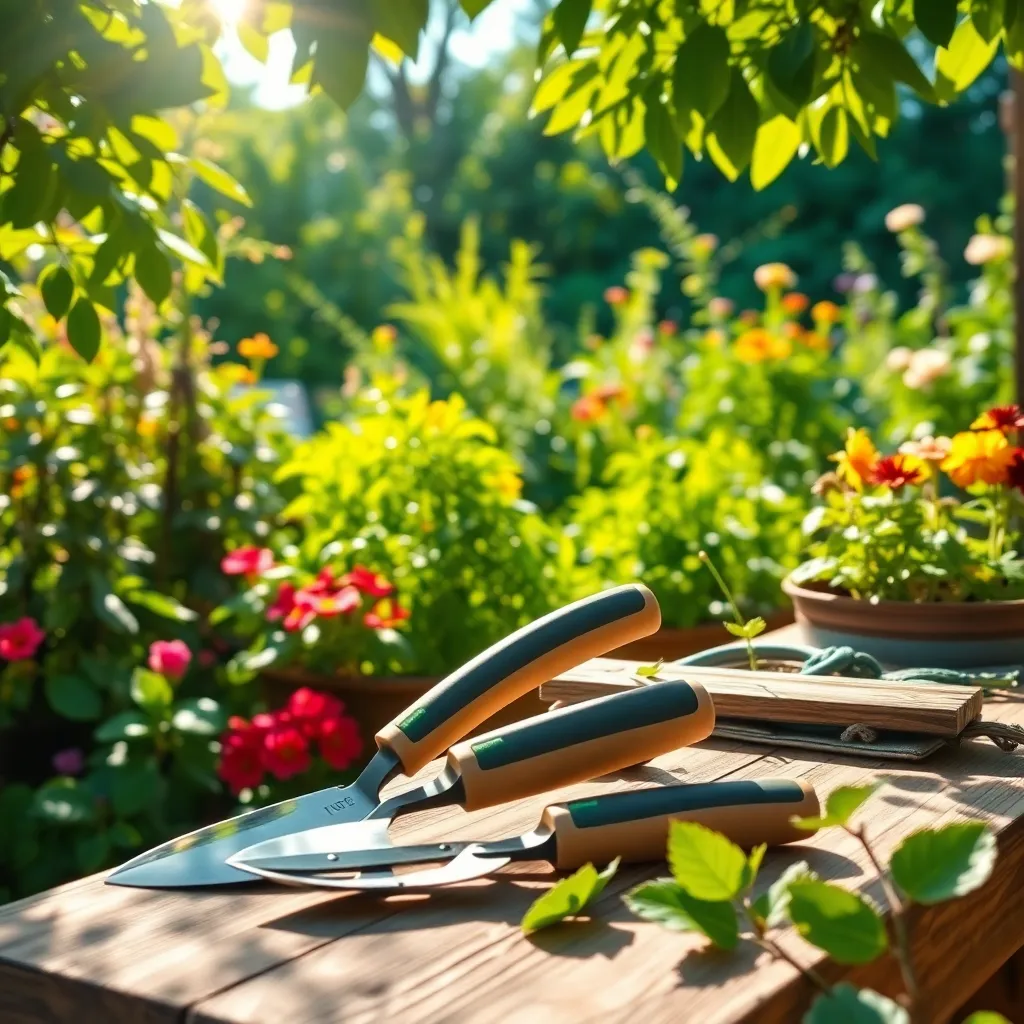
When choosing ergonomic hand tools, it’s important to consider the comfort and efficiency they offer. Tools designed with ergonomics in mind can help reduce strain and fatigue, making gardening more enjoyable and less taxing on the body.
Look for tools with soft, cushioned handles to provide a comfortable grip. This feature is especially beneficial during extended periods of use, as it minimizes the risk of blisters and hand strain.
Consider the weight and balance of a tool before purchasing. Lightweight tools are easier to handle and can reduce the physical stress on your wrists and arms, allowing you to garden longer with less discomfort.
Additionally, tools with adjustable handle lengths can accommodate different tasks and user heights. By doing so, they help maintain proper posture and reduce bending, which is essential for preventing back pain.
Selecting Durable Digging Tools
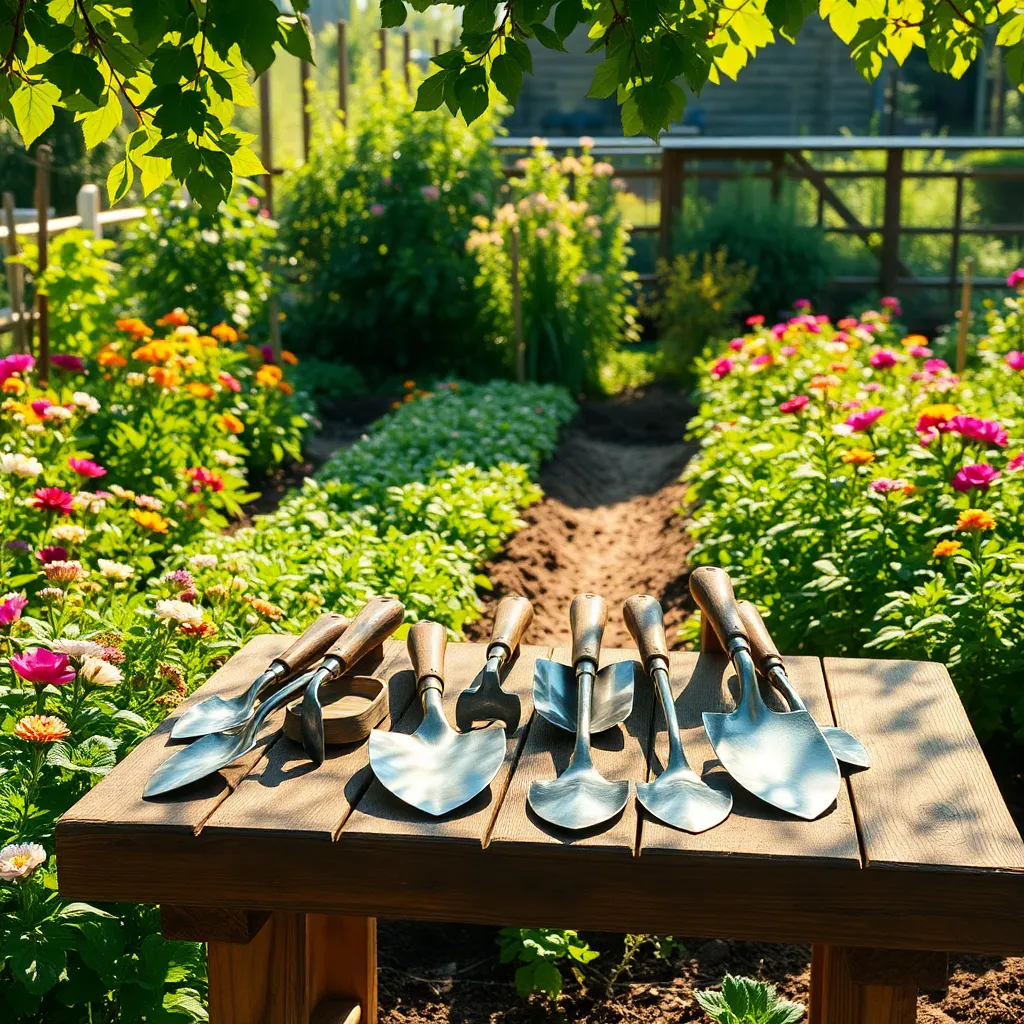
When it comes to selecting durable digging tools for your garden, it’s important to consider both material and design. Look for tools made from high-quality carbon or stainless steel, as these materials offer excellent durability and resistance to rust.
Consider the tool’s handle, which plays a crucial role in comfort and efficiency during use. Opt for handles made from hardwood or fiberglass, as they provide both strength and comfort, reducing the likelihood of blisters during extended gardening sessions.
For those with larger gardens or more demanding tasks, a spade with a sharpened edge can make a significant difference. This design allows for more efficient cutting through tough soil or roots, making your digging tasks quicker and less labor-intensive.
It’s also beneficial to assess the weight and balance of a digging tool before purchasing. A tool that’s too heavy can lead to fatigue, while one that’s well-balanced will improve precision and reduce strain on your body, encouraging longer and more enjoyable gardening sessions.
Finding the Right Pruning Shears
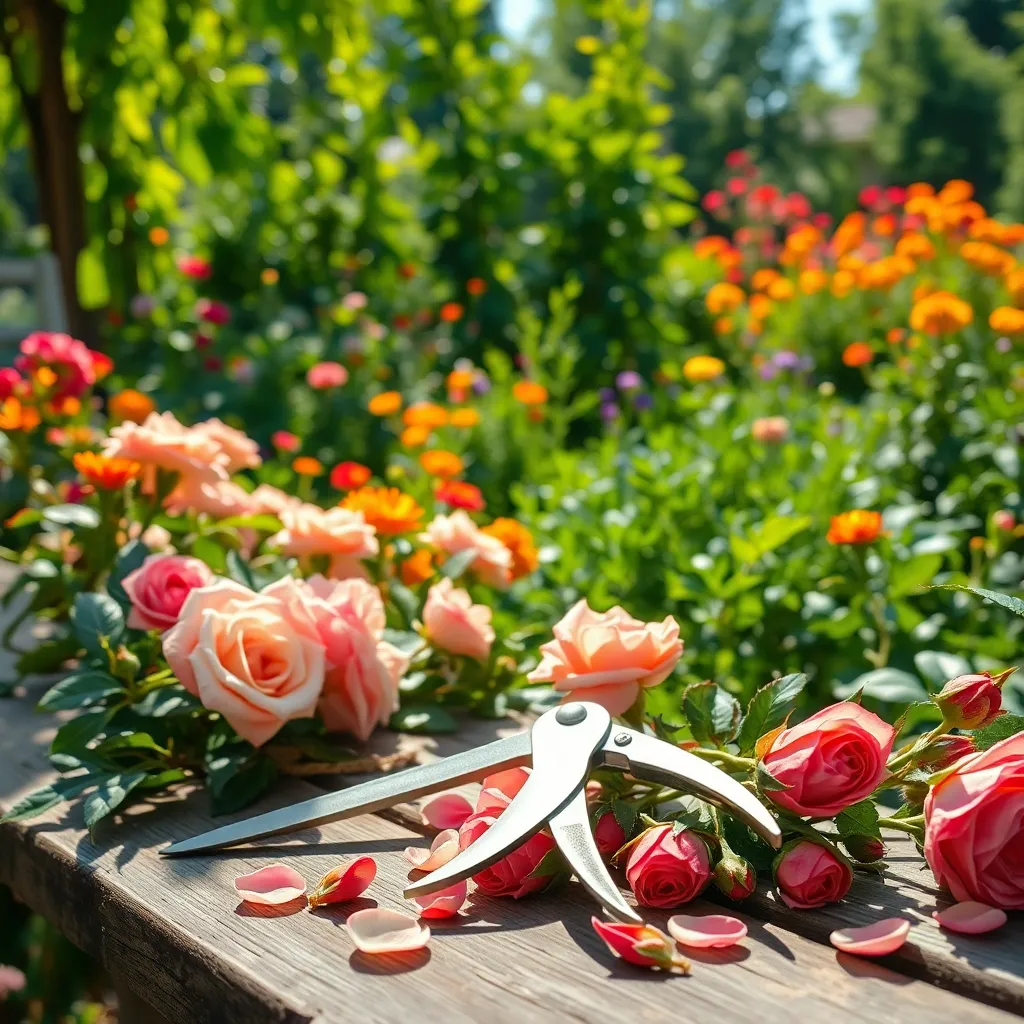
Choosing the right pruning shears is essential for maintaining healthy plants, as they help you make clean cuts that promote plant growth. Invest in a pair with sharp, durable blades made from high-quality steel to ensure longevity and effectiveness.
Look for pruning shears with ergonomic handles to reduce hand fatigue during prolonged use. Comfortable grip is crucial, especially if you plan to work with a variety of plant sizes and types.
Consider the type of plants in your garden when selecting pruning shears. For thicker branches, bypass pruners are ideal, while anvil pruners are better suited for deadwood and tougher cuts.
Regular maintenance of your pruning shears will keep them in top condition. Sharpen blades periodically and clean them with a mild disinfectant to prevent the spread of plant diseases.
Investing in Quality Rakes
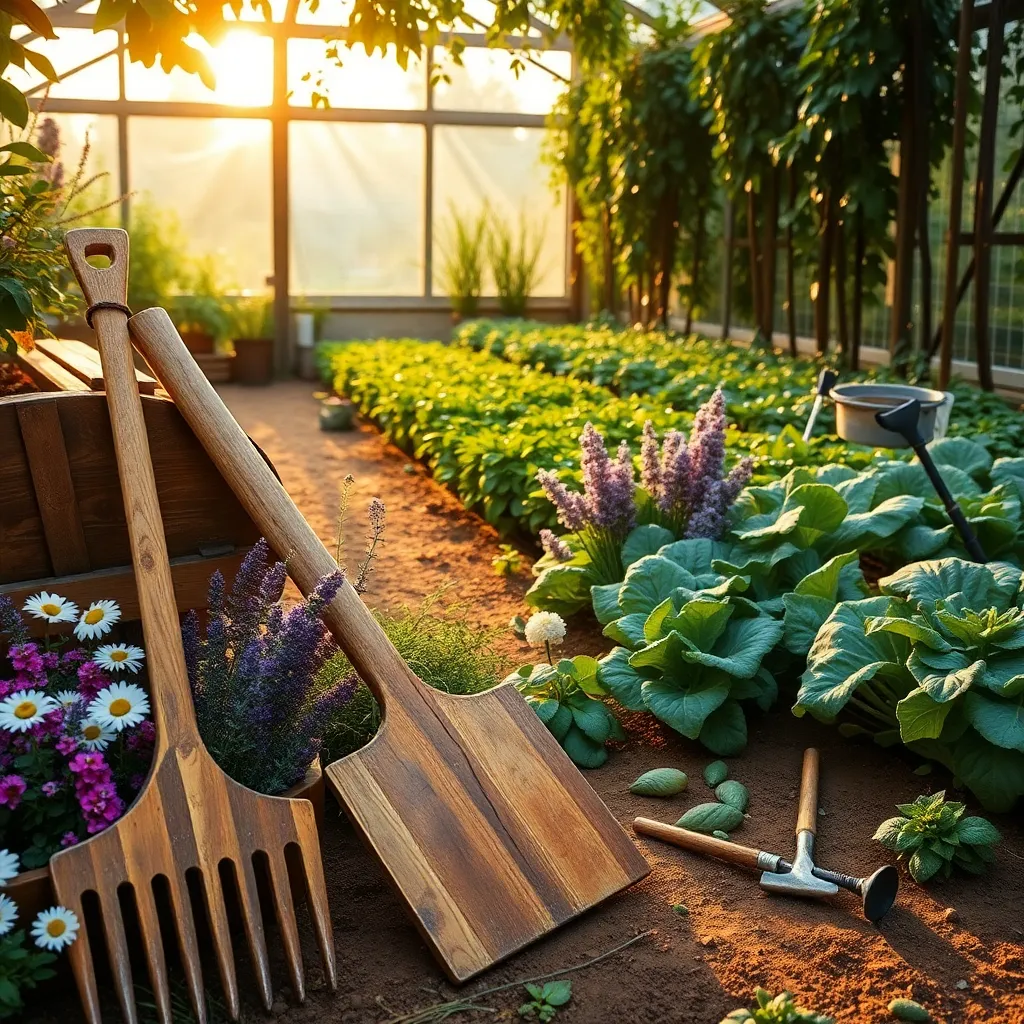
Selecting the right rake is crucial for maintaining a tidy and healthy garden. A quality rake can make tasks like leaf collection and soil leveling more efficient, saving you both time and effort.
When choosing a rake, consider the type of garden work you will be doing most often. For general use, a sturdy metal rake is ideal as it can handle both heavy debris and delicate tasks like spreading mulch.
Investing in a rake with a comfortable handle can make long gardening sessions more enjoyable. Look for ergonomic designs with cushioned grips to prevent hand strain during extended use.
For gardeners dealing with tight spaces or delicate plants, a smaller hand rake can be incredibly useful. This tool allows for precise work around flowers or vegetables without damaging their roots or stems.
Picking the Best Watering Equipment
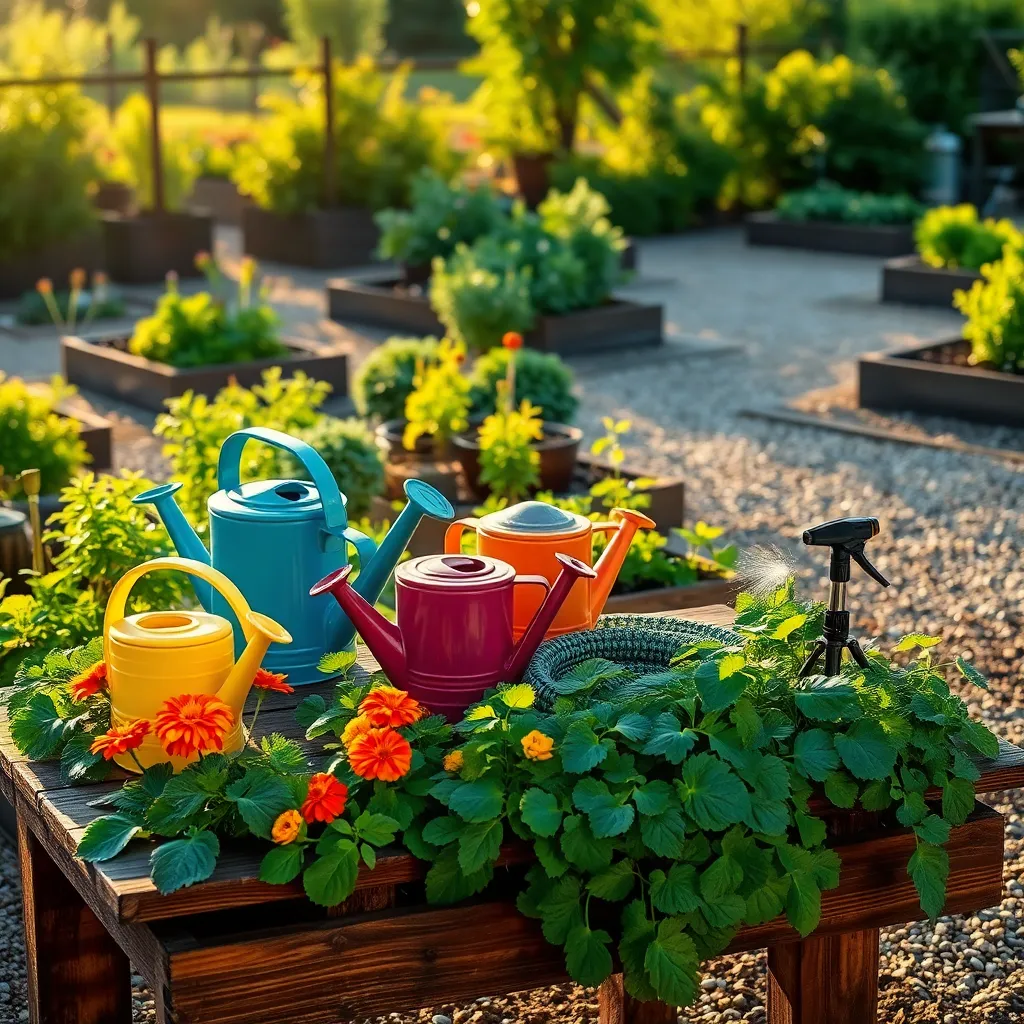
Selecting the right watering equipment is crucial for maintaining a healthy garden. The appropriate tools can make the task easier and more efficient, ensuring your plants receive the right amount of moisture.
Hoses are the backbone of any garden watering system. When choosing a hose, consider its length, material, and diameter to suit your garden’s size and layout.
For smaller spaces or container gardens, a watering can might be your best friend. Opt for one with a comfortable handle and a detachable rose for versatility in watering different plant types.
Drip irrigation systems offer an advanced solution for efficient water use. These systems deliver water directly to the plant roots, minimizing evaporation and water waste, and are perfect for vegetable gardens or flower beds.
- Consider a soaker hose for even water distribution in larger areas.
- Regularly check and clean your watering tools to prevent clogs and ensure they last longer.
- Invest in a hose reel to keep your hose tidy and prevent kinks.
Understanding your plants’ watering needs is essential. Most plants thrive with consistent moisture, but be cautious of overwatering, which can lead to root rot.
To determine if your plants need water, perform a simple soil moisture test. Stick your finger into the soil up to the second knuckle; if it feels dry, it’s time to water.
Finally, water early in the morning or late in the afternoon to reduce evaporation. This practice also helps prevent leaf diseases caused by prolonged wet foliage during the night.
Evaluating Garden Tool Materials
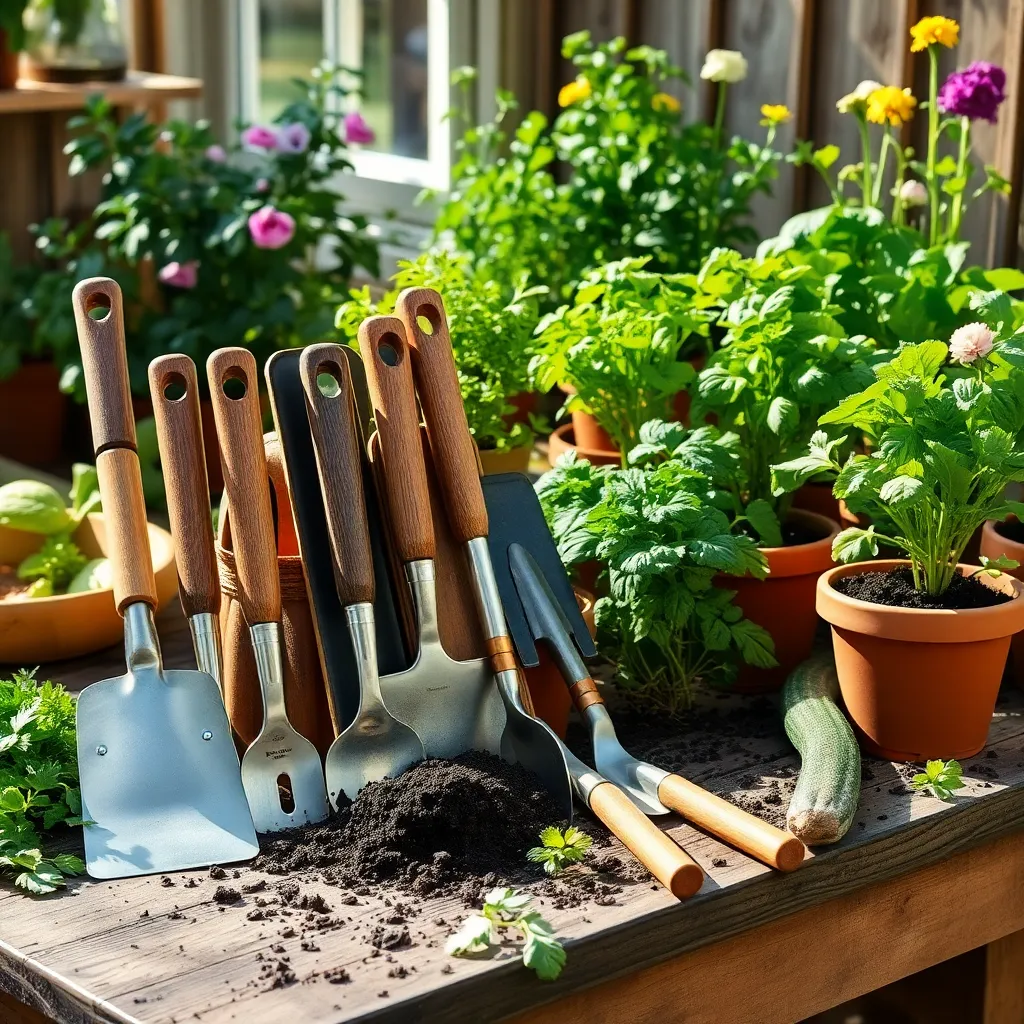
When evaluating garden tool materials, it’s crucial to consider durability and maintenance needs. Stainless steel tools offer excellent resistance to rust and require minimal upkeep, making them a popular choice for both beginners and experienced gardeners.
Alternatively, carbon steel tools provide superior strength and cutting ability, which is beneficial for more demanding gardening tasks. However, they require regular maintenance to prevent rust, including proper cleaning and occasional oiling.
Handles are equally important, with options like wood, fiberglass, and plastic each offering different benefits. Wooden handles provide a comfortable grip and are often more aesthetically pleasing, though they may need occasional treatment to prevent cracking.
Fiberglass handles are known for their strength and resistance to weathering, making them a practical choice for any gardener. Plastic handles, while lightweight and affordable, may not withstand heavy use over time, so it’s essential to choose tools that match your gardening needs and expectations.
Maintaining and Storing Tools Properly
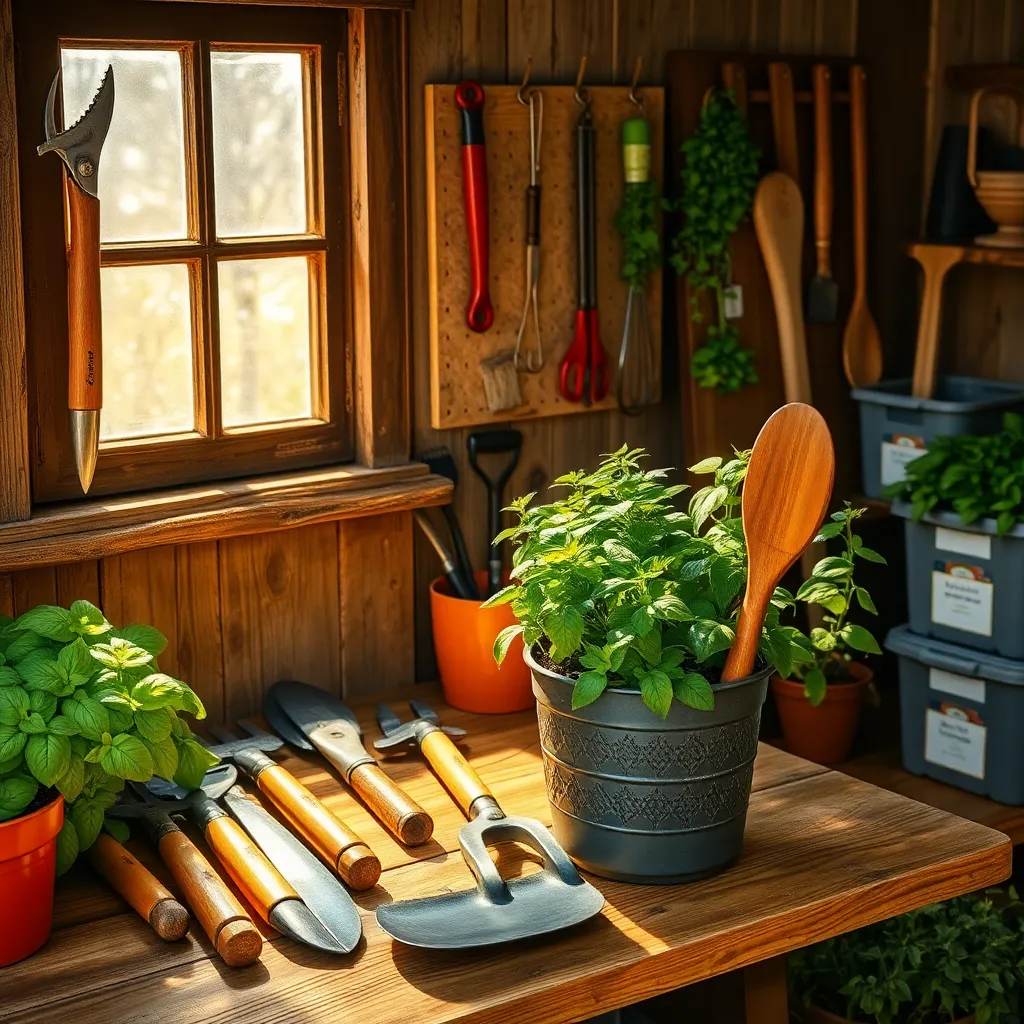
Proper maintenance of garden tools not only extends their lifespan but also ensures that your gardening tasks are more efficient. After each use, it’s crucial to clean your tools with a stiff brush to remove dirt and debris, preventing rust and wear.
Sharpening tools like pruners and hoes enhances their performance and reduces the effort needed to work with them. Use a sharpening stone or a file to maintain a sharp edge, making sure to follow the original bevel of the blade for the best results.
To prevent rust, especially in humid environments, consider applying a light coat of mineral oil to metal parts after cleaning. This simple step creates a protective barrier against moisture and can be done quickly after each use.
Storage is key to prolonging the life of your tools. Store them in a dry, sheltered location such as a garden shed or garage, and hang tools with blades or sharp edges to protect their edges and prevent accidents.
For advanced care, consider keeping tools in a bucket of sand mixed with a bit of mineral oil, which not only keeps them sharp but also prevents rust. This technique is especially useful for smaller hand tools and can be a space-saving storage method.
By incorporating these maintenance habits, you’ll find your tools are always ready for action, making your gardening experience smoother and more enjoyable. Remember, well-maintained tools are an investment in your gardening success!
Budget-Friendly Tool Shopping Tips
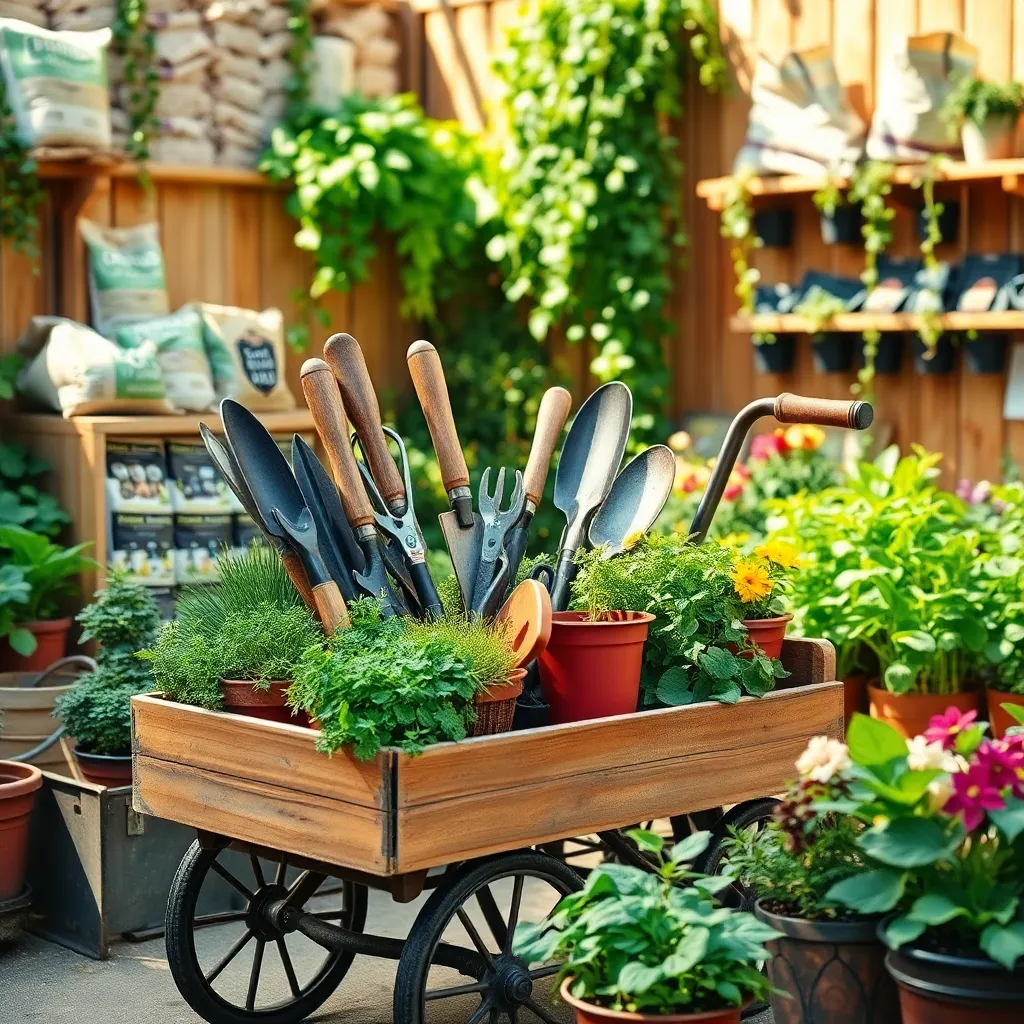
Shopping for garden tools on a budget doesn’t mean compromising on quality. Start by identifying essential tools such as a hand trowel, pruners, and a sturdy spade, which are crucial for most gardening tasks.
Consider purchasing tools during off-peak seasons, such as late summer or winter, when sales are more common. Many garden stores offer end-of-season discounts, allowing you to snag great deals on high-quality items.
Thrift stores and online marketplaces like Craigslist or Facebook Marketplace can be goldmines for affordable garden tools. Often, you can find gently used tools that are just as functional as new ones, especially if you take the time to inspect them before purchasing.
Look for tools with sturdy construction, such as those made of stainless steel or with solid wooden handles, as these materials tend to last longer. Investing in a few well-made tools can save you money in the long run by reducing the need for frequent replacements.
Conclusion: Growing Success with These Plants
In navigating the garden of any relationship, the right tools can cultivate growth and harmony. This article explored ten essential concepts: communication as the foundation, trust-building strategies, understanding love languages, balancing independence and togetherness, managing conflicts constructively, fostering emotional intimacy, maintaining mutual respect, investing in shared goals, practicing gratitude, and continuous learning and adaptation. Each concept serves as a vital tool, helping to nurture and sustain a flourishing partnership.
To put this wisdom into practice, start by selecting one relationship tool to focus on this week—perhaps deepening your communication or expressing gratitude more often. Small, consistent actions can lead to profound transformations.
Feel empowered to revisit these insights whenever needed by saving or bookmarking this article. Just as a gardener wouldn’t be without their trusty tools, having these relationship strategies at your fingertips ensures you are always prepared to nurture your bond.
Remember, the seeds of effort you plant today can bloom into a thriving partnership tomorrow. Your journey to relationship success begins with a single step, and armed with these insights, you are well-equipped to cultivate a loving, lasting connection.

